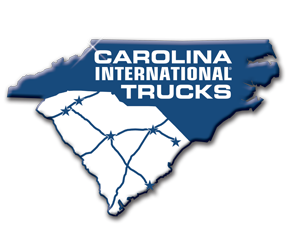New Heavy And Medium Duty Truck Engine Designs

The evolution of heavy truck design is not over yet. There are many new advances made in the areas of engine design, transmission efficiency, electronic parts, and the general aerodynamics of heavy trucks. These new advances have revolutionized the way heavy trucks perform on the highway and within their specific field. The new designs, particularly the advanced engine modifications made as of late, have brought a host of benefits and have been the talk of late in recent Heavy & Medium Truck News reoports. The most notable advances brought about by new engine designs include better fuel efficiency, fuel economy, and a higher power density.
Why is this increased output and efficiency so important?
Since the beginning of emissions regulations for heavy diesel trucks began in 1974, regulations have continued to become tighter and tighter. Today, the federal government seeks to regulate and improve upon greenhouse gas while at the same time increasing fuel economy for highway trucks. This is the main reason heavy truck manufacturers have been so busy tweaking engine and transmission designs. It is the only way their trucks can meet the new regulated standards of today.
While the new designs have had wondrous effects upon heavy truck electrical systems and transmissions, it is the new engine designs that are mostly responsible for truck compatibility with today’s federal regulations.
Let's take a quick look at some of the new engine designs and how they affect the overall fuel performance of heavy trucks.
Pistons
These days, heavy truck manufacturers have been consistently working on bowl-shaped depressions for engine pistons. These depressions, which are found on top of each piston, improves fuel efficiency and reduces PM. Furthermore, this new design incorporates protrusions into the depression that makes for better fuel and air mixing and combustion.
Unit Injectors vs. Rail Injection
For years, heavy-duty truck manufacturers have continued to improve upon unit injectors for greater efficiency. Nowadays, however, most of them are switching over to the rail injection system.
Unit injectors, for the most part, create a great deal of fuel pressure during each intake cycle. Common rail injection, on the other hand, can hold that high pressure within the system during the entire cycle.
The rail injection system basically acts as a controller of pressurized fuel and so there is no wastage in pressure. What is more, common rail injection allows the engine to run at higher pressure levels, which equates to better fuel distribution, atomization, and combustion.
Summary
Heavy truck engine designs yield higher power density, improved fuel efficiency, and fuel economy of up to 10 percent or more. In a nutshell, they save time and money, which is a great combination for any business employing the use of heavy trucks.
If you would like further information about heavy duty truck designs or parts, please feel free to contact us.

